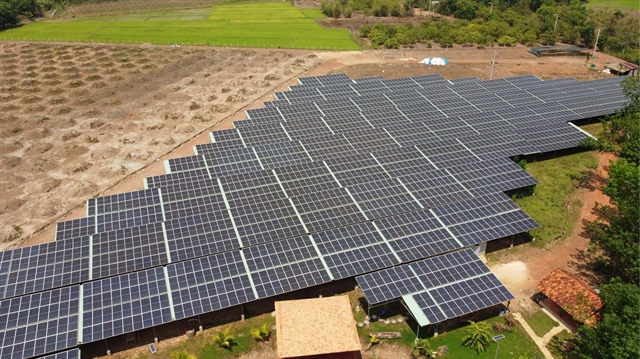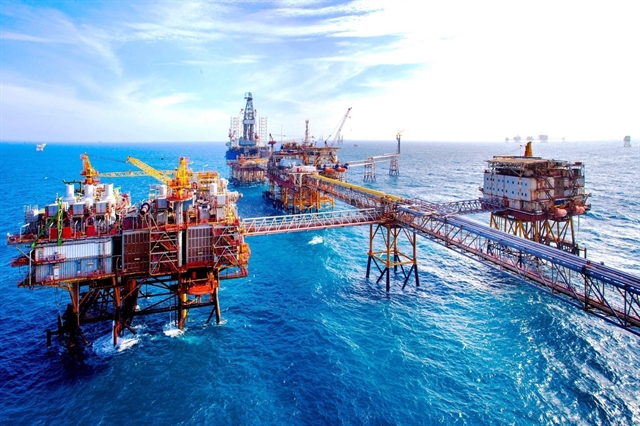 Economy
Economy


|
| An agricultural farm powered by a adjacent solar farm in Bình Phước Province. Sustainble agriculture is one of the eight key solutions to climate change. VNA/VNS Photo Sỹ Tuyên |
HÀ NỘI — Green growth is instrumental for Việt Nam in achieving its target of net-zero carbon emission by 2050, according to Minister of Planning and Investment Nguyễn Chí Dũng.
The minister made the remarks at the seminar "Accelerating green growth in Vietnam: A road map to success" yesterday.
According to the minister the green sector is lucrative as aggregate green products had reached US$5 trillion globally and grew faster than traditional products. By 2030, the sector is expected to create 24 million new jobs worldwide.
In Việt Nam, green growth is always on the government's agenda because the paradigm aligns with the country's net-zero commitments at COP26.
Under Boston Consulting Group (BSG)'s estimation, the country's transition to wind and solar energy has contributed to around $80 billion of its GDP and created over 100,000 openings.
On the other hand, clean hydrogen is expected to add about $45 billion to the country's output and create 50,000 new jobs in the short term.
"Green growth is a long-term instrument for achieving the dual targets of net-zero carbon emissions and fast economic growth", said Dũng.
David Sandalow, director of the Centre on Global Energy Policy at Columbia University, remarked that Việt Nam's prosperity would depend on its ability to mitigate and adapt to climate change while capitalising on the economic opportunities presented by the global transition to clean energy.
He suggested eight solutions for the country to deal with the emerging risks of climate change: renewable energy, coal minimisation, sustainable transport, energy efficiency, clean hydrogen, carbon capture, sustainable agriculture, and green entrepreneurship.
Regarding renewable energy, he urged Việt Nam to solve issues of the pricing mechanism and the risk split between generators, grid operators, and users. He also called for a culture of green entrepreneurship and innovation that embraces sustainability principles.
A representative from SK Group said clean hydrogen would be the key to Việt Nam's decarbonisation. The country would need around 40 million tonnes of the substance per year to achieve net-zero carbon emissions by 2050.
By sector, 56 per cent of the demand would come from manufacturing, including ammonia and green steel production, 26 per cent from power generation, and 18 per cent from transportation.
"Transportation sector needs clean hydrogen because the country is expected to transition to 100 per cent use of green fuel by 2050", said the representative.
She also believed that the successful deployment of clean hydrogen would benefit Việt Nam both environmentally and economically by creating more export opportunities.
For example, Germany promotes hydrogen imports from non-EU countries with a target of 96 TWh per year by 2030. EU, meanwhile, is expected to import 10 Mt of the substance by the same year.
Jaime Ruiz-Cabrero, head of the BCG Southeast Asia, made four recommendations for Việt Nam to move forward in the green growth path.
First, the country institutionalises green strategy and integrates it into relevant ministries' masterplan. Second, the country supports access to green finance, including reducing capital costs by providing a stable regulatory framework.
Third, the country develops green infrastructure and green industrial clusters. Lastly, the country accelerates the development of a clean hydrogen ecosystem. —VNS




